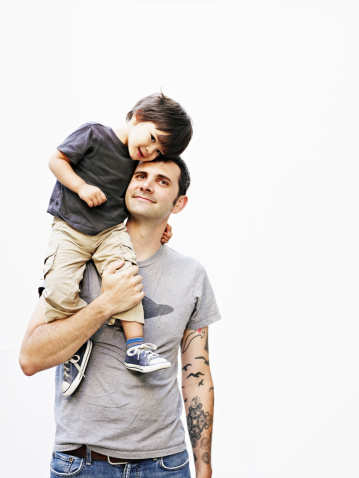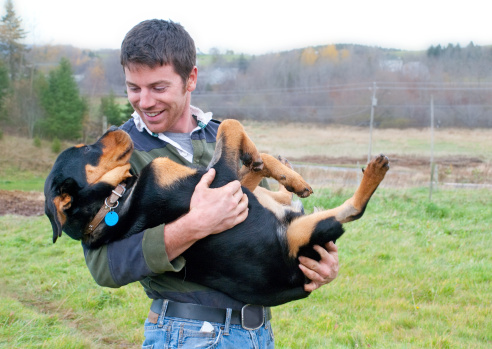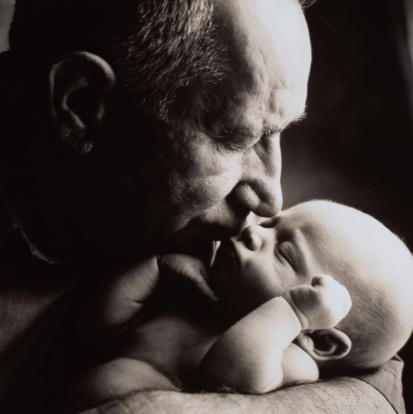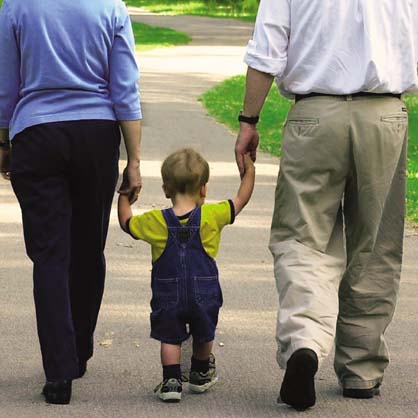
In my
last blog I wrote about how people travel all around the world to learn about how we Collaborative divorce in Minnesota. In this blog, I want to say a little bit about why that is true.
Describing all of the elements of Collaborative Divorce would require more than we could put in one blog. I want to focus on the one element that may stand out above the others: choice.
People who face family conflict need choices. Collaborative Divorce takes everyone, including the lawyers outside the court system, so that there is complete freedom for each family to design a process that truly meets their unique needs. Once people arrive at that place where true choices can be made, there are many options. Here are some examples of choices people can make in the Collaborative Process:
- People can choose to have a parenting expert help them with their children rather than leaving the parenting issues divorce lawyers.
- People can choose to have a financial expert teach them about how to handle finances better rather than just fight over who gets the bigger slice of the pie.
- People can choose to improve their communication, and even, if possible improving their respect and trust of each other, by getting the emotional support that they need.
- People can choose to focus on their highest goals, like reducing conflict and can avoid getting caught up in minor issues.
- People can even choose to put the divorce on pause, if appropriate, to give them time to look at their marriage and determine whether they want to work on reconciliation.
When families are in conflict, trying to fit that conflict into a narrow “one-size fits all” system, can lead to outcomes that do not address true needs. Stepping outside the shadow of the courthouse and letting families design their own course leads to better outcomes.
Divorce is difficult. The choices that you make during this important time could affect your family for decades. Before you take the first step, explore all of your options. To find out about the Collaborative option, go to
www.collaborativelaw.org.

Recently I participated in a case debrief with other members of a Collaborative team. The debrief, or case consultation, is a regular and ordinary part of
Collaborative Team Practice. Any team member can request a debrief to get an update or deal with an emerging issue, or they can be regularly scheduled by the neutral coach as part of team practice. I usually don’t think twice about how remarkable these discussions can be. But it is important to occasionally reflect on what makes Collaborative Team Practice uniquely able to tailor problem solving to the needs of clients. The issue we were addressing as a team was how to best support a divorcing couple to deal with hurtful and contentious behavior by extended family. This is not an uncommon concern. It can be difficult for extended family and friends to know how to behave during a divorce, and many default to taking sides. This can aggravate an already painful situation, especially for children who find themselves in the middle when listening to an aunt, uncle, grandparent or other family member who is critical or dismissive of one parent.
This issue had arisen several times while creating a
parenting plan. Because parents were working with me as a neutral child specialist, it was possible for us to generate options in an open way, e.g. inviting extended family members to a meeting with me to talk about the goals of Collaborative Team Practice and the importance of keeping kids at the center and out of the middle. Parents and I agreed I should discuss their concerns and potential options with their team.
In the team debrief, the attorneys and neutrals working with this family continued to openly address this issue with a problem solving approach, and more options were generated for supporting our clients and their children. Each team member was able to contribute nonjudgmental, constructive perspective and empathetic support. We shared the commitment to assist our clients through a challenging time. In a different kind of divorce process, it would have been difficult to have such an open discussion about an issue with such potential to be polarizing.
Team debriefs are clearly one of the strengths and value-added dimensions of the Collaborative Team Practice model.

Becoming friends with your ex? Or even friends with your ex’s new boyfriend/girlfriend? Do these friendships sound impossible to attain? Perhaps there is something to be learned from the infamous Tiger and Elin Woods’ divorce. Elin recently went on vacation with Tiger, their two kids and Tiger’s current girlfriend, Olympic skier, Lindsey Vonn. The modern blended family – where friendships, and even vacationing together can happen successfully.
If befriending seems like a long-shot for you, try to put bitterness and grudges aside when you consider that new boyfriends/girlfriends/spouses will be around your children, whether you like it or not. Co-parenting is not easy, and it will take time and effort to find the right grove in your new lives. Daisy Camp recently hosted a co-parenting workshop at the Collaborative Alliance, titled “One Bridge to Peace,” where co-parenting tools were provided that allow even one willing, caring parent, to relate peacefully with even the most bitter and contentious co-parent.
Depending on how newly divorced you are, joining each other on vacations may seem like a long-shot, but remember, even introducing yourself and keeping the lines of communication open with you ex’s new companion can go a long way. Who knows, maybe someday you’ll find yourself vacationing in the Bahamas or at Disney with your ex!
 In my role as neutral child specialist I often act as a translator. I work to ensure that parents understand the words and ideas of their children about how family can work best for them moving forward. I help parents listen to rather than react to each other while working on creating a parenting plan. And I frequently deconstruct and revise certain legal divorce terminology into more family-friendly language.
In my role as neutral child specialist I often act as a translator. I work to ensure that parents understand the words and ideas of their children about how family can work best for them moving forward. I help parents listen to rather than react to each other while working on creating a parenting plan. And I frequently deconstruct and revise certain legal divorce terminology into more family-friendly language.
From the start, I ask my adult clients to think of and refer to themselves as
parents rather than
parties. The term
parties to a dispute in a no fault divorce is more impartial than
plaintiff vs. defendant, but it can still sound adversarial to many parents. As I have written before, legal terms like physical custody, legal custody, child support calculator and even settlement sound formal, top down and foreign to how families actually function. In my office, and in the offices of many
Collaborative team professionals, we talk about parenting time and decision making, and the resources parents need to adequately meet their children’s needs in both homes.Since learning this priceless phrase from a child I worked with, I prefer the term
getting unmarried to getting divorced.
I prefer talking about reaching
resolutions rather than
settlements. I ask my clients to refrain from saying
50/50 parenting, because how often do kids think of their parents in percentages?
I remind parents that children think of their moms as 100% their moms, and their dads as 100% their dads, regardless of whether the kids are at school, with their grandparents, on a play date, or where they sleep at night. We use the language of co-parenting that is developmentally informed and attuned to their children’s temperaments and personalities.
Language powerfully shapes our human experience, and communicates both explicit and implicit meaning. The words chosen to describe a process or event are important. Discussing important concepts in clear, thoughtful, straight-forward language and avoiding the use of jargon whenever possible can promote clarity and understanding during an already anxiety-arousing process.
And that is also priceless.
I seem to be going through a “mourner phase,” these days. Last month, I attended four funerals. This month, a couple. Frequently, these events were labeled “a celebration of life.” Sometimes they were; other times, not so much.
It’s not unusual for children or close relatives to speak at these events, describing the bond between themselves and the deceased, and how it was created. Often, the speaker can bring that person to life, figuratively speaking, with their words. The last thing in the world we ever expect to hear is that Joe was a mean, abusive so-and-so; he denigrated his wife, beat his kids, and has as much chance of getting into Heaven as Osama bin Laden. Admittedly, none of the services I attended included such a speaker. Although . . .
One of them included an out-of-town relative who was a member of the clergy. His memories of the dead individual brought to mind a temperance revival meeting, and really turned into a rant about how this relative had saved the decedent’s soul at the last minute. To many in attendance, and this was NOT an evangelical group, it appeared the funeral in those moments had ceased to be a celebration of the dead man’s life and had instead become all about the relative.
As I struggled with how inappropriate the funeral hijacking felt, my deja vu detector went off. It took me a while to realize why. As a divorce lawyer, I get to help officiate at the death of a marriage. In the best cases, when a couple sees the wisdom of planning their family’s future together, those divorces can include a large measure of honoring that marriage, even if it stops short of an outright celebration. The relationship that brought the children into the world can be buttressed and supported going forward. The good things can be retained. The bad parts . . . well, the bad parts are why they’re in my conference room.
And then there are those who, oblivious of the relational aspects of the marriage that died, just want to go on and on, like the prodigal clergyman, and make the divorce all about them. Their “rights,” their money, their property, even “their” children. Losing sight of the Big Picture is an uncomfortable thing to witness, whether it accompanies the death of a person, or the death of a marriage. When couples keep that Big Picture in mind, they can create a fitting memorial to the marriage that used to be, and honor the family that still is.

Dogs have long been known for their ability to have healing effects on the sick, but did you know that adopting a dog while going through the divorce process can provide another wonderful form of therapy? Whether getting a new puppy or adopting a dog, there is value in adding a furry companion to your life. Man’s (or woman’s) best friend alleviates that empty feeling you may now be experiencing when you walk in the door at night.
Divorce often time leaves you feeling unwanted, just like many of those dogs at the shelter, which makes that canine even more relatable. Perhaps that dog came to the shelter from a divorced family herself. It has been proven that people benefit from interacting with canines. Simply petting a dog can decrease levels of stress hormones, regulate breathing, and lower blood pressure. Research also has shown that petting releases oxytocin, a hormone associated with bonding and affection, in both the dog and the human. Dogs respond to human emotions, and seem to know just when their companion needs a little extra loving.
A dog, or other animal, can also be helpful for children coping with a divorce. Research shows that a dog can be therapeutic for a child experiencing a divorce crisis. A pet teaches a lot about coping skills, at a time when their parents may not coping very well. Cuddling up to a dog or other critter can be calming, and teaching a dog a new trick can be rewarding.
If you are looking for a constant companion, who will help reduce your stress levels (and won’t talk back!), adding a new furry friend to your home may be a good divorce healing solution for you.

After the service was over, my friend, Larry, came up to me and said, “When I die, I want you to do my eulogy!”
“Then he’s going to have to spend a lot more time with you,” my wife chimed in. “He’ll have to learn a lot more about you.”
“Oh, God, no!” said Larry. “I don’t want THAT. I want him to lie his head off about what a great guy I was.”
For my father-in-law, one of the Greatest Generation’s Navy veterans, there were many amazing accomplishments to remind his friends and family of. There was his status in the family, and the endless help he provided. There was comedy and quirkiness. There was love.
It all begged the question, as I put the remembrance together, of what could be said of anyone? How do you sum up someone’s life? What did they like? What drove them crazy? I thought about some of the divorce clients I’ve had over a 34-year career, about the ones who just wanted to know “what my rights are.” About others who’d never missed a school play all the way through public school, and were terrified they might, if communications broke down. I wondered what eulogies their children might deliver. What would those epitaphs be?
“I just want to know what my rights are”?
“Daddy! You came!”?
“You were always there for me, Mom!”?
It’s said the Past can inform the Present. It might be a good thing if the Future could, as well.

Sometimes Life’s lessons are subtle and elusive. Other times, they’re less so.
In mid-March, my granddaughter arrived “in the usual way”, big dark eyes and a head full of dark hair that had all the nurses exclaiming. My stepson was beside himself with joy and tenderness. My wife’s feelings radiated from her face like a beacon. That was Thursday night. On Monday, the new parents brought the baby to St. Johns Hospital to visit Grampa, who was failing, and in and out of awareness. Grampa was able to sit up and hold his great-granddaughter. “Sweet baby!” he murmured repeatedly, smiling down at her.
The next day, Grampa returned to his assisted living apartment under a hospice arrangement. The last weekend of March saw my wife and I camped at his bedside from Friday on. Relatives came and went, and as the significance of the moment registered, I expressed my feelings in poetry. Monday morning he slipped away. The funeral was three days later.
In each case, I was reminded of the majesty and grandeur of Life’s primal events; of how great is the illusion of human control over the most important matters of our lives. I wondered at the ability of a tiny baby to cement two young people together, and suddenly found myself thinking how insane is the notion that anything could ever separate her parents. Yet, as a divorce lawyer, I see it every day. And I was humbled once again recalling my clients who reconnected with the joy of their children’s births at the same time they were witnessing the death of their marriages; who saved what they could and grieved the loss of what they couldn’t. Occasionally, I hear from them, reporting that the Great Wheel of Life did, in fact, continue to turn; that sometimes the lessons they learned were not realized until months or even years later. It made them, they report, much more sensitive to the teachings of any given moment. It made them participants, rather than mere spectators, in their own lives. It made them think.
Recently I received a LinkedIn endorsement from Christa, a client I represented in 2008 in her collaborative divorce. In thanking her for her endorsement, I took the opportunity to ask her how she was doing. With her permission, her response is reproduced below. At the time of her divorce, Christa’s two (2) daughters were 16 and 17, and Christa only worked part-time.
Hello Tonda,
How nice to hear from you! Life has been good on my end. I’ve move forward professionally and personally–continued to work in psychiatric research, first part-time and then, for the past 4 years full-time. In addition, I’ve been building my private counseling practice, which led to 60+ work hours per week. The practice is going well enough that I was able to resign my salaried position effective this November. It’s not easy leaving a place that feels like a curious and lovable community, but for the sake of living a full life, choices needed to be made.
In October 2008, a mutual friend introduced me to a man who is now my husband. He was married before and has 2 children–his son is the same age as my oldest daughter (23), and his daughter is 15. We were married February last year (2013) on Key West. Almost my entire family came over to be there for us–including some nieces and nephews. It was lovely.
Two weeks later, my former husband got married as well to a woman he had been dating since our separation.
The girls are doing very well. My oldest daughter will be graduating this coming spring with a major in education and mathematics. My youngest daughter will graduate next December, and then plans to get her MA degree in child psychology. After struggling with grades and transitions the first year, they have both become straight-A students.
My youngest daughter said something interesting the other day while we were driving. She said, “Mom, I can’t even imagine you and dad being together anymore; it’s not like I don’t remember, but you guys are so different, and all my friends can’t even believe the two of you were ever married. I mean, how did you make it work for so long?”
Today, both my daughters see the benefit of their parents having divorced and moved on. My former husband seems happy, has a good relationship with his daughters and brought a great woman into his life. I’m happy as well, and likewise have a wonderful connection with my daughters. Both daughters are relieved they don’t have to worry about either one of us, and both of them like our choice of new partners.
Everyone is well and happy. I’m very grateful for the part you played in giving me the information and support I needed to take the step toward divorce that had frightened me so much. Not once did I regret this transition. I appreciate the divorce process was not hostile. You were calm, wise and nurturing when I was in the grips of anxiety. Sure, there were hurt feelings and it’s very stressful going through this process. However, it left two people free to move forward and build a meaningful life. It also freed our children from the worry they had for parents who just could not be happy together.
So: thank you, thank you, thank you!!!
All the best,
Christa
When Gwyneth Paltrow and Chris Martin made the recent announcement that they were
 consciously uncoupling,
consciously uncoupling, they clearly touched a public nerve. There was immediate sniping from people who seem to prefer celebrity gossip leavened with spite and public histrionics. Critics derided the process Paltrow and Martin are choosing and questioned their motives, and more than one “expert” opined that divorce could not occur without acrimony and anger. I beg to differ.
How cynical has the public discourse become when people would criticize a process of divorce that mindfully strives to create emotional safety for children?
What’s to be gained by scoffing at the notion of creating an effective co-parenting relationship?
Why is there an automatic assumption that hurt and sadness–even betrayal–must trigger fury and contempt, and that divorce is of necessity an adversarial process?
As a Neutral Child Specialist, I respect the calm and dignified way Paltrow and Martin have begun this sad journey, which, because of their professions, will need to be done in the public eye. Understanding that language is powerful, I applaud the term conscious uncoupling, which, like getting unmarried, does not carry the emotional baggage of the word divorce. I was especially impressed when Paltrow and Martin referenced the wish to co-parent and to continue to be a family for the sake of their children
A divorce process that puts the needs of children at the center is much healthier, not only for children but also for their parents. It is true that effective co-parenting leads to a much higher quality of life for all family members. These goals are embodied in the work of the Collaborative Team Practice community. Collaborative Team Practice may not be chosen by those who don’t believe that parenting during and after a divorce requires mindfulness, a certain amount of self-sacrifice and hard work to keep children at the center and out of the middle. However, it is an excellent process for parents who want to reduce the impact of a painful change on their children’s future.
 In my last blog I wrote about how people travel all around the world to learn about how we Collaborative divorce in Minnesota. In this blog, I want to say a little bit about why that is true.
Describing all of the elements of Collaborative Divorce would require more than we could put in one blog. I want to focus on the one element that may stand out above the others: choice.
People who face family conflict need choices. Collaborative Divorce takes everyone, including the lawyers outside the court system, so that there is complete freedom for each family to design a process that truly meets their unique needs. Once people arrive at that place where true choices can be made, there are many options. Here are some examples of choices people can make in the Collaborative Process:
In my last blog I wrote about how people travel all around the world to learn about how we Collaborative divorce in Minnesota. In this blog, I want to say a little bit about why that is true.
Describing all of the elements of Collaborative Divorce would require more than we could put in one blog. I want to focus on the one element that may stand out above the others: choice.
People who face family conflict need choices. Collaborative Divorce takes everyone, including the lawyers outside the court system, so that there is complete freedom for each family to design a process that truly meets their unique needs. Once people arrive at that place where true choices can be made, there are many options. Here are some examples of choices people can make in the Collaborative Process:








